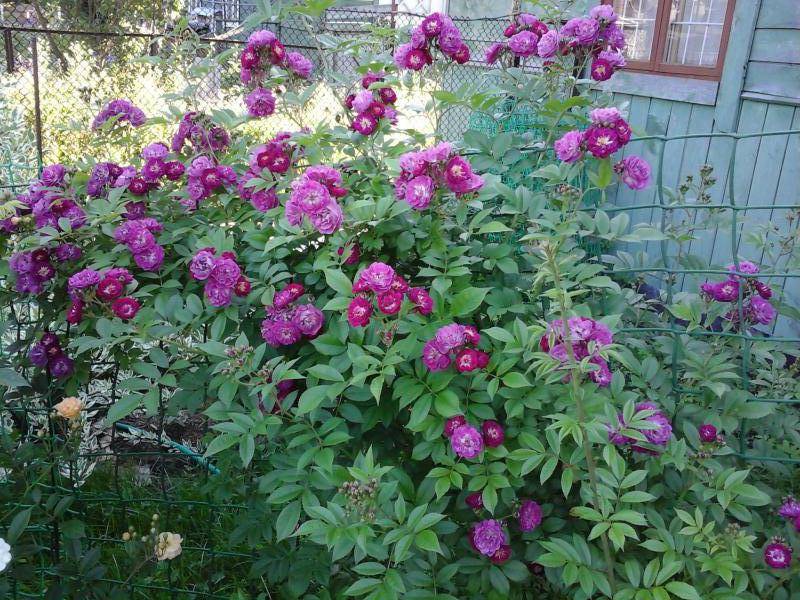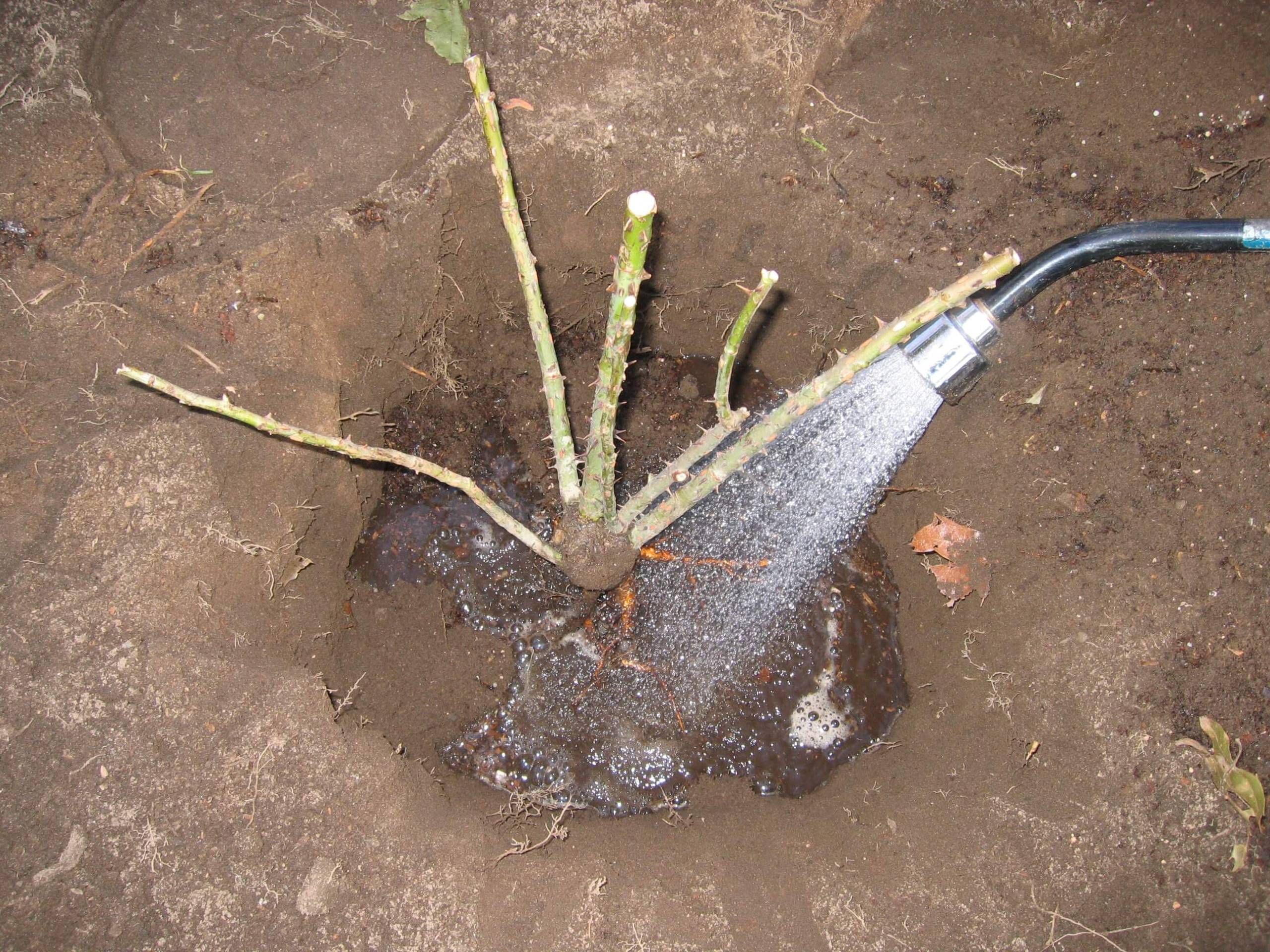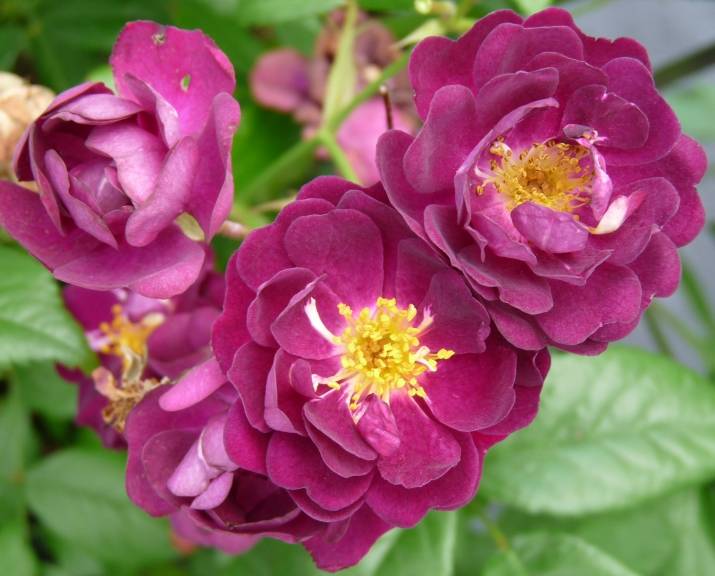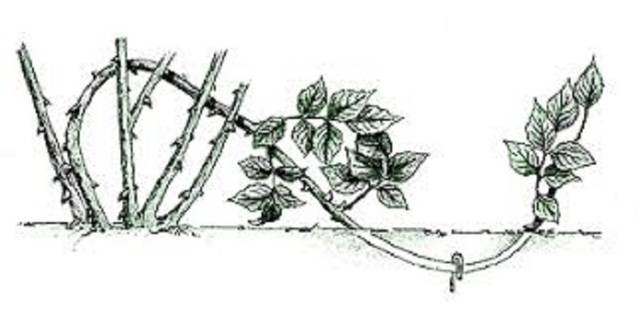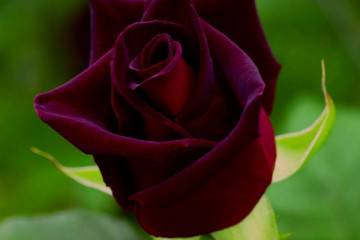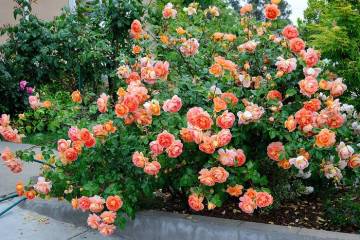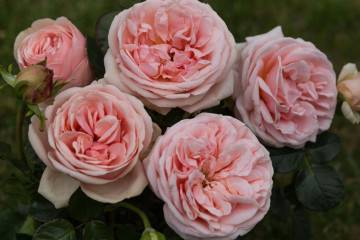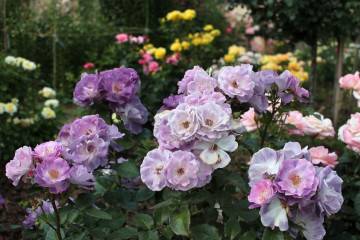Rose Perennial Blue - variety description
Content:
Rose Perennial Blue is prized by gardeners for its abundant and long flowering. Her long lashes with lilac-purple inflorescences can become a spectacular decoration of the local area. The following is a description, characteristics of the climbing rose, as well as the conditions for growing, care, methods of its propagation in the garden.
What is this grade
Rose Perennial Blue (Mehblue, Mehv9601) was bred by British specialist Bernard Mehring in 2003. He crossed Veilchenblau and Super Excelsa. Three years later, the culture received a special prize and a silver medal at the Rose Competition in Baden-Baden.
Description, characteristic
Crop shoots reach a height of 2-3 meters. The bush spreads up to 2 meters wide. On the branches, inflorescences of lilac-purple color are formed. They consist of 5-12 semi-double flowers with a diameter of 3-4 centimeters. During the flowering period, a sweet aroma emanates from the bushes.
Rose Perennial Blue has good immunity. It is resistant to powdery mildew and black spot. The culture blooms from spring to mid-autumn.
Advantages and disadvantages
The positive qualities of the variety include the following characteristics:
- continuous flowering;
- decorativeness of the bushes;
- frost resistance;
- good immunity;
- unpretentious care.
The negative qualities include the burning out of the petals from hot sunlight hitting them.
Use in landscape design
The Perennial Blue climbing rose is used for vertical gardening of the garden. It can be planted alone, used as a hedge. Experienced gardeners are able to grow shrubs in the form of a trunk.
Long lashes are launched along the arch, pergola. The culture is planted near columns, pillars, and other supports. She can decorate farm buildings.
Growing
In order for the rose to bloom profusely and for a long time, agrotechnical measures must be correctly carried out. They planted it on the site with bushes. They are grown from cuttings or purchased from trusted vendors. The seedlings should not be more than 2 years old. There should be no signs of disease or pest damage on the shoots and root system.
A rambler rose is planted in spring or autumn. In regions with cold climates, planting is best done in May. Then the bushes have time to take root well before the onset of frost. In warm climates, the rose can be planted in late September or early October.
For planting Perennial Blue roses, they select an area protected from drafts. The landing site should be well lit by the sun. It is advisable that on a hot afternoon there is a shade over the bushes: this way the flowers will not fade from the sun's rays.
How to prepare the soil and flower for planting
The rose will grow best in loamy soil. Peat, river sand are added to too heavy soil, and clay is added to light soil. If the soil is acidic, lime and ash are added to it. Alkaline soil is diluted with rotted cow dung and peat.
The root system is placed in water 3-4 hours before planting. For disinfection, you can add potassium permanganate to it. Before planting, the stems and roots are slightly trimmed.
They are planted on the site like this:
- Dig a hole 60 × 60 × 60 cm in size.
- Drainage is laid out at the bottom.
- Pour in a fertile substrate.
- Bushes are placed in the middle, roots are spread.
- Fall asleep with earth, lightly tamp.
- The rose is watered abundantly, the root circle is sprinkled with mulch.
Plant care
Crop care consists in timely watering, feeding, pruning faded buds. In the spring, prophylactic spraying is performed against diseases and pests.
Water the rose as the top layer of the soil dries. To avoid sunburn, the procedure is performed in the morning or evening. At least 20-30 liters of water are poured under an adult bush.
Perennial Blue does not like high humidity. Therefore, with frequent rainfall or constant overhead irrigation, the culture can be affected by fungal diseases.
Perennial Blue blooms almost all summer, so to maintain strength, the culture needs to be fed several times per season. In the spring, nitrogen is added, for example, urea or saltpeter. Before flowering, the bushes are fed with a complex mineral fertilizer. After the first wave of flowering, phosphorus and potassium are added. The same composition is used in the fall.
Pruning and replanting
In climbing roses, shoots are usually not cut, only the extra side stems are removed. For adult bushes, rejuvenating pruning is carried out: at the same time, as many old branches are removed as new ones have grown.
Dry, diseased, broken shoots are cut off throughout the season. In addition, faded buds are removed. The procedure is carried out with a sharp, disinfected secateurs. If necessary, the bushes are transplanted in spring or autumn.
In the middle of autumn, water-charging irrigation is carried out. In the southern regions, no shelter is required for the Perennial Blue. In cold areas, the lashes are removed from the supports, laid on a layer of mulch. Top covered with spruce branches, agrofibre.
Blooming rose
The culture blooms almost continuously from spring to late autumn. The buds begin to form in May. After the first wave of flowering, there is a short period of rest. From July, flowering lasts until the frost.
During the flowering period, the bushes are watered abundantly, the faded buds are removed. After the first wave of flowering, the rose is fed with a nutrient mixture of potassium and phosphorus. The procedure is repeated in the fall.
What to do if it does not bloom
In the year of planting, the rose does not bloom, since it is still very young. And on the contrary, if buds appear, they need to be cut off. In order for the bushes to bloom profusely throughout the season in the future, they must first take root well.
Flowering may not occur if the plants are planted too deeply. The root collar should be no more than 10 centimeters deep. For abundant flowering, the rose needs to be fed several times per season. But if only nitrogen is introduced into the ground, one green mass will develop. In order for the culture to bloom, a complex mineral fertilizer is used with an advantage in the composition of potassium and phosphorus.
Flower propagation
The gardener can easily spread a climbing rose on the site with cuttings or layering. Seed propagation is not used due to its laboriousness. The method of cultivating a culture by grafting is used only by experienced specialists.
For grafting, the material is harvested in the fall. Shoots are cut into pieces 15-20 centimeters long. They must have at least 3 internodes. Store the cuttings in a cool place. They start planting in the spring. The rose is propagated by layering in early summer.
Cuttings are planted in the spring in containers with loose soil, covered with foil.The shelter is removed after the planting material begins to take root and release new leaves. Well-developed bushes are planted on the site.
The rose is propagated by layering as follows:
- Dig grooves about 10 centimeters deep.
- Lashes are laid in them.
- Attach with staples, water abundantly.
- Cover with earth, cover with mulching material.
During the summer and autumn, the planting site is looked after: watered, remove weeds, loosen the ground. Soon, new plants will appear from the layers. When they grow up well, they are separated from the parent bush with a sharp tool, planted separately.
Diseases, pests and ways to control them
With a large amount of rainfall, the rose can be affected by fungal diseases. The same problem is possible with excessive watering of the bushes by the gardener. For the prevention and treatment of the culture, fungicides are used.
Possible pests of the rose are aphids, spider mites. Insects weaken plants by sucking out cell sap from them. If pests are detected, insecticides are used.
Perennial Blue is a climbing rose variety that forms lilac-purple inflorescences. The bushes are not whimsical to care for, frost-resistant, rarely affected by diseases and pests. The climbing rose is used for vertical gardening of the site, blowing lashes along the pergola, arch, and other supports.

